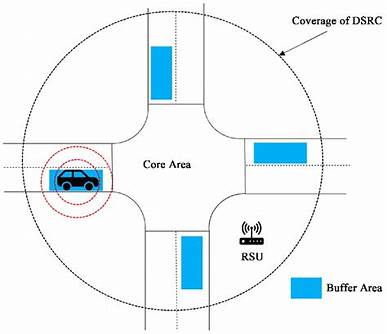Exploring the Quirky Charm of Fish Eddys: A Report
What are Fish Eddys?
There’s nothing quite like the beauty and mystery of a river, and its secrets are sometimes best revealed in the hidden places where the water changes course. One of these places is the eddy, a whirlpool formed when the water meets an obstruction like rocks or riverbanks. But what exactly are fish eddys?
Put simply, fish eddys are quiet pools in the water where fish can rest before continuing on their journey upstream. They’re formed when a current flows around an obstacle, creating a swirling vortex that can stay in place for minutes or even hours. These eddys are a vital part of a fish’s upstream migration, allowing them to take a break from swimming against the current and conserve their energy.
For anglers, fish eddys can also be excellent spots to catch fish. Because the eddys are quieter than the main current, fish are more likely to be hanging out there, waiting for food to drift their way. In fact, fish eddys are often used by fishermen as a way to predict where the fish will be, and to increase their chances of a successful day on the water.
But fish eddys aren’t just useful for fishing; they’re also an important part of the river ecosystem. They provide a sheltered environment for juvenile fish to grow and develop, away from the stronger currents that can wash them downstream. This also helps to keep the fish populations healthy and vibrant, ensuring that they’ll be around for years to come.
So the next time you’re out on the river, take a moment to appreciate the beauty and importance of fish eddys. They may seem like small, insignificant whirlpools, but they’re actually an essential part of the complex ecosystem that sustains our rivers and the creatures that call them home.
The Benefits of Fish Eddys for Aquatic Ecosystems
Fish eddys, also known as pools or riffles, are areas in water bodies where water flows in a circular motion, keeping fish protected from strong currents. These eddys occur naturally in streams, rivers, and other water bodies, and they serve as essential components of healthy aquatic ecosystems.
One important benefit of fish eddys is that they provide a vital refuge for fish, particularly during periods of high-flow events. During these events, swift-moving water can wash fish downstream, making it challenging for them to swim against the current and continue their upstream journeys. When fish encounter an eddy, they can rest and conserve their energy before continuing upstream.
This sheltered resting spot also allows fish to stay out of the sight of predators, increasing their chances of survival. Eddys create areas of low flow, and this low-velocity water attracts smaller insects and other invertebrates that serve as food for fish. As such, fish can feed and grow stronger in these areas, improving their overall health and vitality.
Another benefit of fish eddys is that they contribute to water quality. These areas create turbulence that mixes the water, providing oxygen to support aquatic life. As fish and other organisms contribute their waste to the water, the moving water in eddys helps to disperse the waste, reducing pollution in the ecosystem.
Fish eddys can also serve as indicators of the overall health of an aquatic ecosystem. Healthy ecosystems tend to have ample vegetation growth and free-flowing water that creates eddys, while unhealthy ecosystems may lack these features. The ability of fish to thrive within eddys is a reflection of the overall health of the aquatic ecosystem.
Overall, fish eddys are an essential component of healthy aquatic ecosystems. They provide shelter, food, and a safe space for fish to rest and recuperate before continuing their journey. When fish populations are healthy, it helps to maintain the overall balance and health of the ecosystem in which they live.
The Importance of Fish Eddys in Creating a Stable Aquatic Habitat
Fish eddys are essential in creating a stable aquatic habitat, providing a safe space for fish and other aquatic organisms to thrive. The structure of a fish eddy creates a water flow that is slower and less turbulent than the main current of the river or stream. When water moves slower, it allows sediment to settle, thus creating a more stable bottom for aquatic flora. The slower flow of water also allows fish to more easily navigate upstream and downstream, providing access to food sources and breeding grounds.
Additionally, fish eddys provide a refuge for fish to rest and hide from predators. The slower water flow allows fish to conserve energy while they rest in the eddy, safe from the strong main current. Fish eddys also provide a safe space for fish to lay eggs and for the young to grow and develop outside of the main current where they are not easily swept away. As a result, fish eddys play an important role in maintaining the biodiversity of aquatic ecosystems.
Furthermore, fish eddys are crucial in reducing the effects of erosion in rivers and streams. The less turbulent water flow created by the fish eddy reduces the amount of sediment that is carried away by the river, which in turn helps stabilize the riverbanks. This is especially important in areas where human development has altered the natural flow of the river or stream.
In summary, fish eddys play a vital role in maintaining the stability and health of aquatic ecosystems. They provide a safe space for fish and other aquatic organisms to thrive, while also reducing the effects of erosion on the surrounding environment.
Overview of Fish Eddys

Fish eddys are small, circular whirlpools found in rivers and streams that provide essential habitat for fish and other aquatic organisms. These areas are characterized by slower currents and deeper water, allowing fish to rest and feed in a sheltered environment. Fish eddys also provide crucial spawning grounds for many species of fish. However, despite being a vital part of aquatic ecosystems, fish eddys around the world are being threatened by human activities.
The Impact of Dam Construction on Fish Eddys

Dam construction is one of the main threats to fish eddys. Dams are typically built to control water flow to generate hydroelectric power or for irrigation purposes. However, dams disrupt the natural flow of rivers, changing the water conditions that fish eddys depends on. As a result, fish struggles to survive. They’re unable to spawn in disrupted eddys which leads to reduction in fish species. Moreover, dams trap sediment and other debris behind the wall which causes ecological imbalances and deterioration of the habitat which harms the eddys further.
Effects of River Channelization on Fish Eddys

Another major threat to fish eddys is river channelization. Channelization is when a waterway is straightened or widened to improve navigation and flood control. While it can help prevent damage from floods, channelization also alters water flow patterns and destroys the habitat of fish and other aquatic organisms. This leads to the extinction of some species. The situation is worse because when river channels alter, sediments depositation changes, and there’s scarcity of nutrients and macro-invertebrates that fish feed.
Climate Change and Fish Eddys

The earth’s changing climate is also affecting fish eddys in different parts of the world. As global temperatures rise, the melting of glaciers causes rivers to experience heavier water flow. These floods wash away important fish habitat, including eddys, and disrupts the waterways that are important for the survival of fish species. Climate change may also affect the water temperature and maximum length that eddys exist. therefore, Climate change presents a threat to fish eddys indirectly by extreme flood and weather conditions which cause loss of habitat. and fish species that will be unable to adapt to new eddies.
Conservation of Natural Riverine Habitats
Fish eddys are heavily dependent on their natural riverine habitats, which provide them with food, shelter, and breeding grounds. Therefore, conserving these habitats is crucial for the protection of fish eddys. One way to achieve this is by implementing strict regulations against habitat degradation, which can be caused by activities such as logging, mining, and urbanization. Governments and communities must also work together to protect riparian zones that surround rivers, which act as natural filters that prevent sedimentation and maintain water quality. In addition, preserving wetlands and floodplains is vital for the protection of fish eddys, as these areas serve as natural spawning and nursery habitats.
Implementation of Sustainable Fishing Practices
Unsustainable fishing practices, such as overfishing and using harmful fishing gear, can have devastating effects on fish eddys. To prevent this, sustainable fishing practices must be implemented. This includes regulating fishing quotas and gear types to ensure that only sustainable amounts of fish are caught, using gear that does not damage the riverbed, and practicing catch and release techniques that allow fish to survive. Education programs can also be implemented to teach fishermen about the importance of sustainable fishing practices and the consequences of unsustainable practices on fish populations.
Promotion of Sustainable Development Policies
Sustainable development policies that protect water resources are essential for the long-term protection of fish eddys. This includes promoting sustainable agriculture practices that reduce the amount of pollution and sedimentation that enters the waterways. Land use planning and zoning can also be implemented to prevent urbanization and industrialization in sensitive riverine areas. Additionally, sustainable energy sources, such as hydropower and wind power, can be utilized to reduce reliance on fossil fuels, which can negatively impact water resources.
Proper Waste Management
Proper waste management is crucial for the protection of fish eddys, as waste can contaminate riverine habitats and impact water quality. Governments must enforce regulations that prevent illegal dumping of waste into rivers, and encourage the use of sustainable waste management practices. Communities can also help by practicing proper waste disposal and reducing the amount of waste they produce. This includes recycling, composting, and reducing the use of single-use plastics, which are a major source of pollution in waterways.
Collaboration between Governments, Communities, and Stakeholders
Protecting fish eddys requires collaboration between governments, communities, and stakeholders. This includes involving local communities in decision-making processes, and providing them with the resources and education they need to become involved in protecting their local waterways. Engaging stakeholders such as fishermen, environmental groups, and water resource management agencies can also be helpful in developing policies and initiatives that prioritize the protection of fish eddys. Ultimately, it is essential for all parties to work together to prioritize the protection of water resources and the sustainable use of riverine habitats for the long-term survival of fish eddys.
 Fish Tank Facts Fish Tank Facts and About Aquarium
Fish Tank Facts Fish Tank Facts and About Aquarium